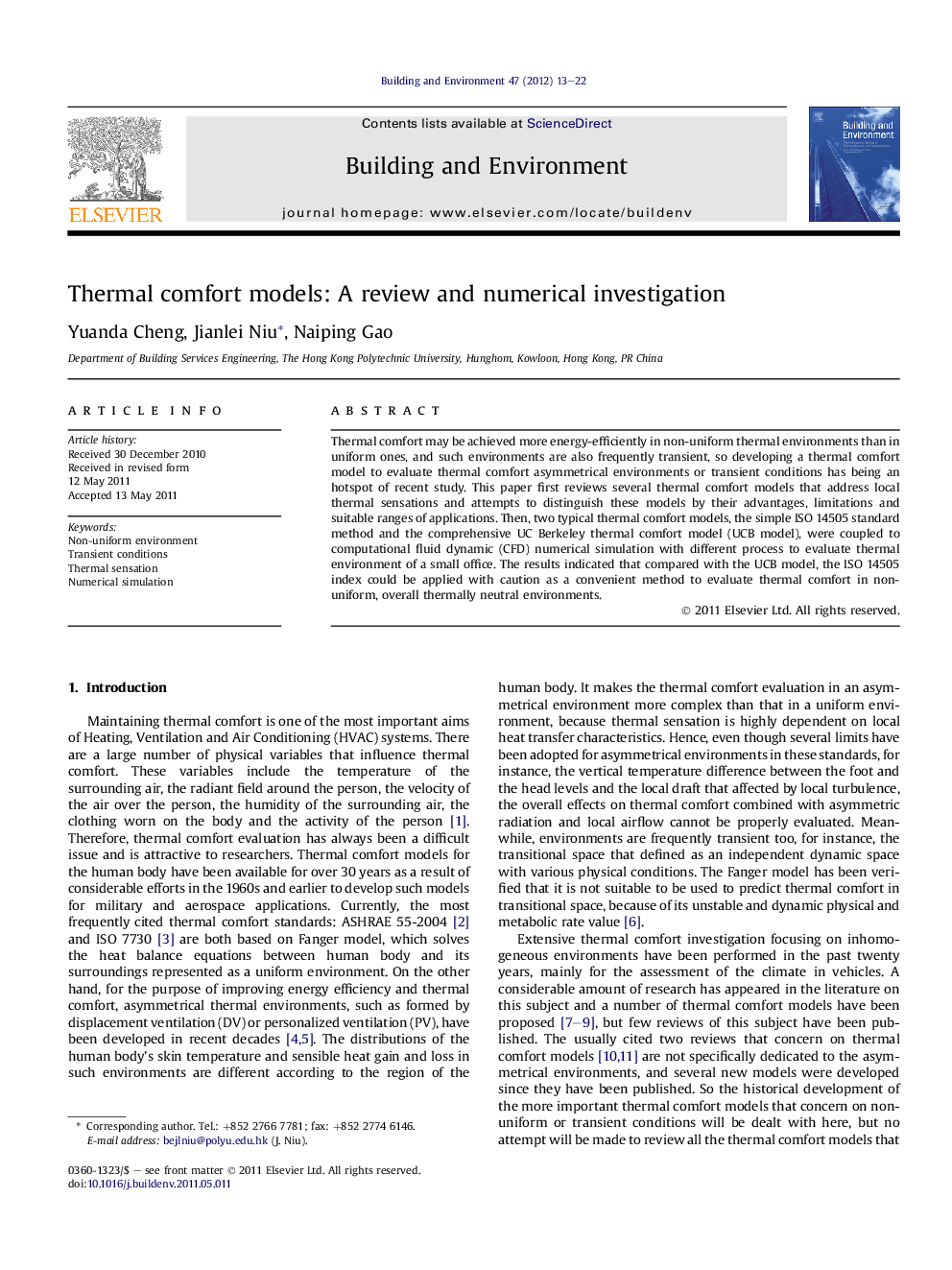| Article ID | Journal | Published Year | Pages | File Type |
|---|---|---|---|---|
| 248584 | Building and Environment | 2012 | 10 Pages |
Thermal comfort may be achieved more energy-efficiently in non-uniform thermal environments than in uniform ones, and such environments are also frequently transient, so developing a thermal comfort model to evaluate thermal comfort asymmetrical environments or transient conditions has being an hotspot of recent study. This paper first reviews several thermal comfort models that address local thermal sensations and attempts to distinguish these models by their advantages, limitations and suitable ranges of applications. Then, two typical thermal comfort models, the simple ISO 14505 standard method and the comprehensive UC Berkeley thermal comfort model (UCB model), were coupled to computational fluid dynamic (CFD) numerical simulation with different process to evaluate thermal environment of a small office. The results indicated that compared with the UCB model, the ISO 14505 index could be applied with caution as a convenient method to evaluate thermal comfort in non-uniform, overall thermally neutral environments.
